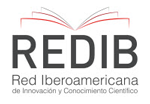Medicinal plants: Antibacterial effect in vitro de Plantago major L, Erythroxylum novogranatense, Plowman var truxillense and Camellia sinensis on stomatologic importance bacteria
DOI:
https://doi.org/10.15381/os.v13i2.2853Keywords:
Medicinal plants, Antibacterial effect, Plantago major L, Erythroxylum novograntense var truxillense, Camellia sinensis.Abstract
The objective of this research was to compare the antibacterial activity in vitro of the hydroalcoholic extracts of three medicinal plants: Plantago major L. (plantago), Erythroxylum novogranatense var truxillense (trujillo coca) and Camellia sinensis (green tea) by the agar disk diffusion method on five strains of oral bacteria: Streptococcus mutans ATCC 25175, Lactobacillus acidophilus. ATCC 314, Actinomyces viscosus ATCC 15987, Prevotella melaninogenica ATCC 25845 and Fusobacterium nucleatum ATCC 25586. The hydroalcoholic extracts were obtained from total active principles from the dry leaves of each plant, by maceration in alcohol with ethyl alcohol at 70 % and subsequent evaporation of the solvent with the use of a rotary evaporator. Each extract was diluted in ethyl alcohol at 70% in concentrations of 25 ug/ mL and 50 ug/mL. These solutions were compared with Perio Aid® (chlorhexidine 0.012%) as positive control and with ethyl alcohol at 70% as negative control. When performing the sensitivity tests in vitro, the following results were obtained: the three hydroalcoholic extracts in both concentrations showed a higher antibacterial activity than the ethyl alcohol (5.8 mm) and lower than the Perio Aid® (22.0 mm) on the five bacterial strains being studied. The highest activity showed the hydroalcoholic extract of Camellia sinensis at 50 ug/mL, the lowest activity showed Plantago major L. at 25 ug/mL. It is concluded that the three hydroalcoholic extracts in the dissolutions of 25 and 50 μg/mL showed antibacterial activity on Streptococcus mutans, Lactobacillus acidophilus, Actinomyces viscosus, Prevotella melaninogenica and Fusobacterium nucleatum. The antibacterial effect was increased with the concentration on P. melaninogenica, which was the most sensitive strain, and A. viscosus was the less sensitive.Downloads
Downloads
Published
Issue
Section
License
Copyright (c) 2010 Verónica Alvarado Villanueva, Hilda Moromi Nakata

This work is licensed under a Creative Commons Attribution-NonCommercial-ShareAlike 4.0 International License.
AUTHORS RETAIN THEIR RIGHTS:
a. Authors retain their trade mark rights and patent, and also on any process or procedure described in the article.
b. Authors retain their right to share, copy, distribute, perform and publicly communicate their article (eg, to place their article in an institutional repository or publish it in a book), with an acknowledgment of its initial publication in the Odontología Sanmarquina.
c. Authors retain theirs right to make a subsequent publication of their work, to use the article or any part thereof (eg a compilation of his papers, lecture notes, thesis, or a book), always indicating the source of publication (the originator of the work, journal, volume, number and date).



















